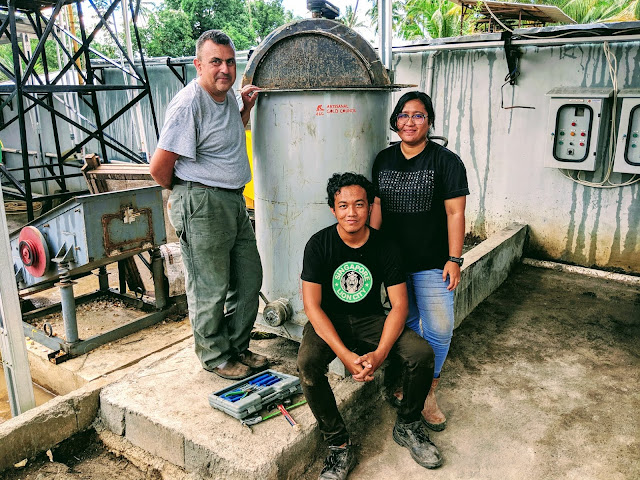The Media's demonization of the Artisanal Gold Mining sector isn't helping
The Miami Herald in 2018 and now Buzzfeed and the NYT in 2019 have published, once again, the typical easy story on alluvial gold mining in the Amazon: The very simplistic and oft repeated "mining is bad" story. They cast a pall over any and all that are involved in artisanal mining. What they report is not entirely untrue, but it is far from representative of the vast world of artisanal mining in the 82 countries where it occurs. Worse though, is that stories like this damage the fragile peace that has been obtained between governments and artisanal miners the world over during the last decade. The peace has been largely brokered by the UN and the OECD with their initiatives on mercury pollution (the Minamata Convention) and transparency (Due Diligence in the Gold Supply Chain). Mostly what the UN and OECD have championed though, is recognition of the huge development opportunity the artisanal gold mining sector represents. Helping the sector become a responsible one contributes directly to 11 of the UN's 17 sustainable development goals. This is important information and should be included in the telling of these stories so that the public is informed that there are many good reasons to help the 100 million people dependent on the sector to get a fair shake.
Buzzfeed came in on the Burning Brazilian Amazon issue, looking to add more fuel to the fire of international outrage while it was newsworthy. In reality, alluvial mining in the Amazon has been going on for more than 40 years but if you read these articles you would think it just started yesterday. Sadly Buzzfeed and the Miami Herald are taking an alarmist view and neglect the more significant story of the amazing people involved in artisanal gold mining and their struggle to rise. It’s a "River of Blood" said the Miami Herald in 2018; and "You could drop a nuclear bomb on the forest, and it would be better than mining" says Buzzfeed just this week (September 2019); "Tainted Gold" says the NYT (September 2019). These stories single out the small group of criminal elements and the underbelly of international trade and profiteering (an easy story) and, by association, condemn the millions of people that the sector employs. How about a meaningful and humanizing connection with the artisanal mining camps and the people in them?
Anybody involved in public health knows that all you are doing is creating anxiety and disconnection if all you do is alert people to a hazard without providing a solution. BuzzFeed and the Miami Herald and NYT are hazard mapping with reckless abandon with only brief and dismissive mention of solutions or the real people and families involved. In my view, they should do a much better job explaining who the artisanal miners are that they find so interesting. It would be enormously beneficial and provide needed impetus to efforts trying to improve artisanal mining if journalists were to dig a little deeper and help invert the typical and easy and alarmist story about artisanal mining; to tell the more complex story of millions of people struggling to create prospects for themselves and their communities in a vacuum of opportunity and support. The professionalization of the sector should also be a story worth telling! Find a way to explain to the world that the vast majority of artisanal miners are not villains but rather, just like the Californians of yore, they are millions of good and hardworking people trying to get by and create a future for themselves and their families.
If you ask these journalists, if they want to induce a pay cut to millions of poor people, they of course say "no", and protest. "But" they say. "But there must be a better way." Of course there is, and for sure, a less sensational portrayal of artisanal mining by journalists is an important part of enabling progress to happen.
#ProfessionalizeArtisanalMining



The demonisation of the Artisanal Mining Sector is not confined to the miners of the Amazon. In Papua New Guinea we estimate there are more than 100,000 people actively involved with the most basic equipment.
ReplyDeleteNo bulldozers, no huge excavations just individuals trying to eke out an existence in a country where opportunity is limited or non existent, and poverty, illness, and violence is a way of life.
These miners don't want to cut down the trees, they don't want to destroy their land, and they don't want to find a Million Dollars of gold each month.
Their dreams and aspirations are simply to be able to provide for their families, to afford medical treatment when they become ill, and to have the most basic needs for survival.
Most are delighted to make just $100 per month which is far more than they have without mining.
They also want their families to be able to mine and continue to mine for generations in a sustainable manner ensuring that the land is not destroyed, farming can continue, and the land retains it's beauty.
In my personal dealings with communities in some of the most remote and beautiful places on the planet, the overwhelming message I hear is that they want to be trained to mine properly, in an environmentally conscious way, without destroying their traditional lands.
So maybe the media should accompany those of us who know the truth on some of our visits to these remote communities and see first hand how the people actually live, mine and survive.
Thank you, Dr. Telmer, your message is spot-on and critical to adopt if we're going to see the transformation of artisanal gold mining and a compassionate, inclusive gold supply chain.
ReplyDelete